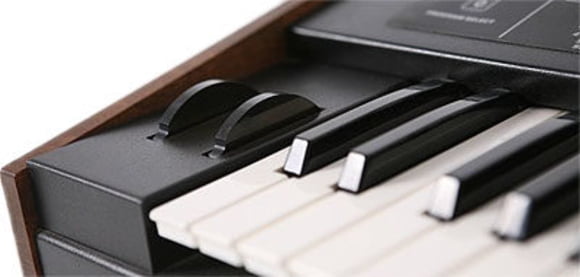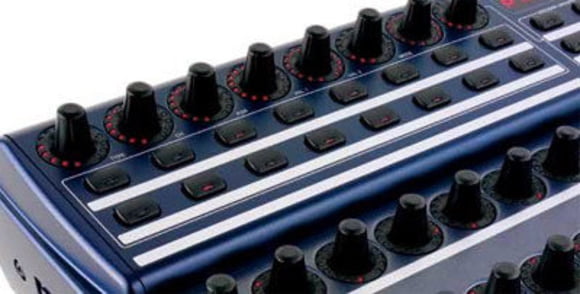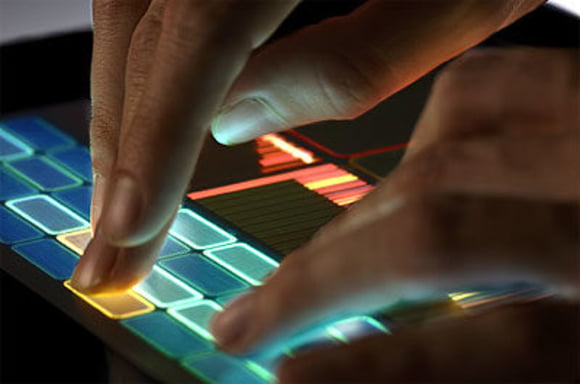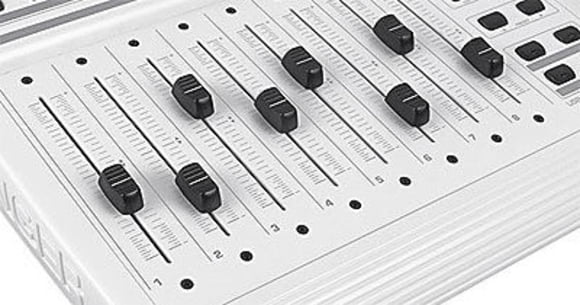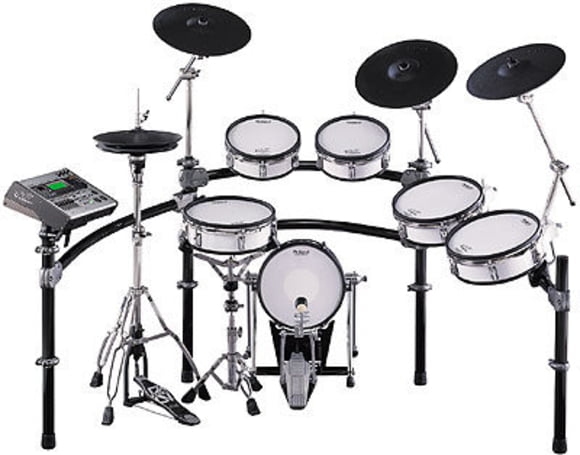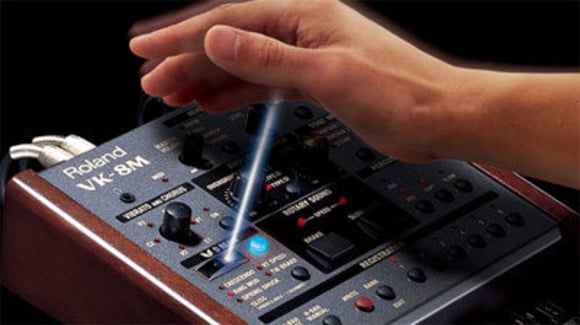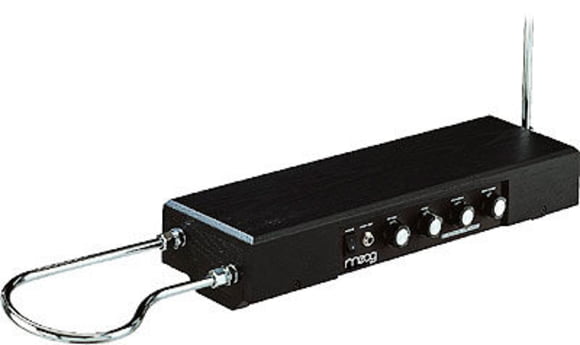6. Types of control
Depending on their size, function and construction, controllers feature a variety of contact and contactless controls for accepting the instructions of operators, as you can see in the pictures above. There is a wide range of options:
Modwheel/Pitchbend wheel
Modulation and pitch bend wheel on a synthesizer: these are probably the controls that have been around fopr the longest time. Usually, they are located to the left of the actual keyboard.
Rotary switches
A very familiar type of control. Whether we're talking about the volume controls on your home stereo set or about the filter cutoff on your mini moog - almost every controller will feature rotary switches. They may not have a set beginning and end, many can be rotated 360°. The respective initial setting is determined by the information the controller "picks up" from the device.
Iluminated infinite rotary switches on a Behringer BCR 2000
Button
Simply pressing it triggers (or ends) a set function.
Membrane keys
A stylish variation on the button, these became popular in the 1970s and '80s. The operating interface of the Yamaha DX7 is a famous example. Unfortunately, membrane keys often lack the clear pressure point that gives the user unambiguous feedback.
Touch screen
Many modern keyboards feature touch screen controls.The advantage is that functions can be freely assigned to the individual controls simply by programming - these devices are highly flexible. However, there are no pressure points, and neither is there any tactile experience. JazzMutant's Lemur is representative of the current state of the art.
Faders
Behringer BCF 2000 fader controller; an indispensable tool for precise control. Without generously apportioned, precisely controlling the volumes in mixing remains little more than gambling.
Drum pads
Drum come in all imaginable sizes, and they greatly vary in quality. Older pads and those in the budget range are made of plastics or materials resembling rubber. More expensive models resemble drum skins and make for very realistic play. Strictly speaking, even the foot pedal is its very own controller.
Contact-free controllers
The optical sensor on the Roland VK-8M Organ Soud Module; the D Beam Controllers on Roland Synthseizers are a well-known example. Using an infrared beam, they register the distance of the hand from the control and the speed of its movement.
Theremin
Moog theremin; contact-free control of volume and pitch by moving the hand between two antennae. Leon Theremin invented this instrument in 1919.
Keyboard
Not much to say, this is probably the one type of controller every single one of you has some experience with.
and many, many more ...


